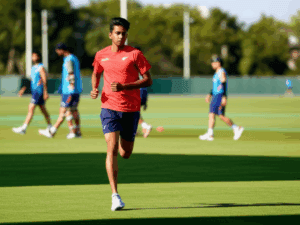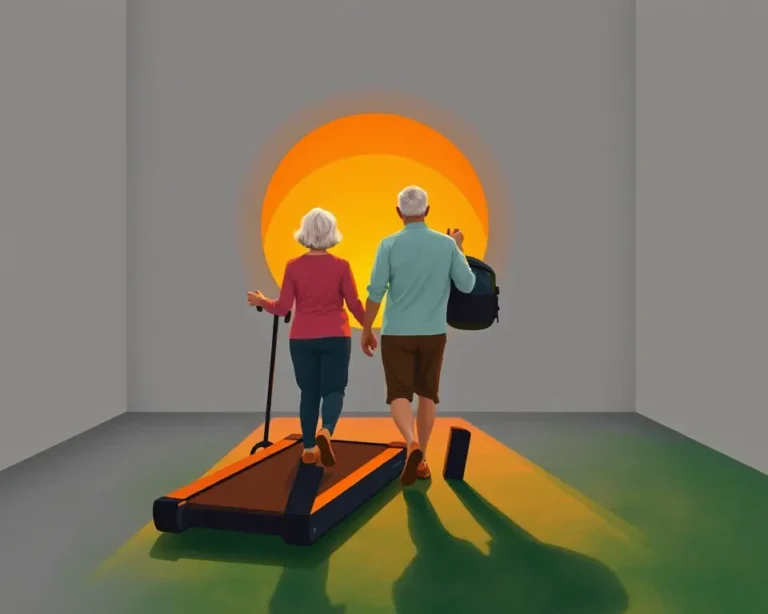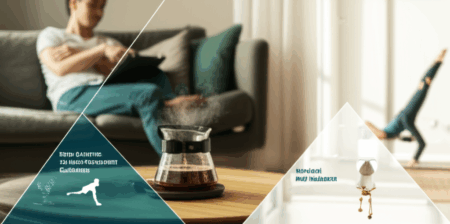For those entering their golden years, the quest for optimal health often involves sifting through a mountain of fitness advice. But according to Nassim Nicholas Taleb, the renowned scholar of risk and author of The Black Swan, the answer may lie in a less conventional approach than endless cardio. Taleb, 64, champions a fitness philosophy centered around strength training, particularly the barbell squat, combined with low-intensity movement. His reasoning challenges the common emphasis on swimming and running for seniors, advocating instead for exercises that build resilience and real-world functionality.
Why Strength Training Trumps Traditional Cardio After 60
While activities like swimming and running have their place, Taleb suggests they shouldn’t be the sole focus, especially for retirees. Here’s why he prioritizes strength training:
- Combating Muscle Loss: Sarcopenia, the age-related decline in muscle mass and strength, is a significant concern for older adults. Strength training is a powerful tool to combat this, helping maintain independence and quality of life. Compound exercises, like squats, engage multiple muscle groups simultaneously, leading to more effective strength gains.
- Boosting Bone Density: Osteoporosis becomes a greater risk with age. Weight-bearing exercises, such as squats, stimulate bone growth and increase bone density, reducing the risk of fractures.
- Improving Balance and Coordination: Falls are a leading cause of injury for seniors. Strength training enhances balance and coordination, which can significantly reduce the risk of falls. A gentle, slow walk can also sharpen coordination, further minimizing fall risk.
- Enhancing Functional Fitness: Strength training improves the ability to perform everyday tasks like getting up from a chair, carrying groceries, and climbing stairs. Squats, in particular, mimic these movements, making daily life easier and maintaining mobility for longer. As personal trainer Eric Daw notes, “When you have to go to the washroom, that’s a squat. When you get in the car, that’s a squat. Every time you sit down or stand up, that’s a squat. If you don’t do them well, it affects the way you live.”
- Building Resilience: Taleb’s philosophy emphasizes building a robust system that can handle unexpected shocks. Strength training prepares the body to handle unexpected physical demands and maintain overall strength.
- Metabolic Benefits: Strength training helps regulate blood sugar, improve insulin sensitivity, and boost metabolism, all crucial for maintaining health as you age.
The Taleb Approach: Slow Walking and Intense Strength Training
Taleb’s fitness routine blends seemingly disparate elements: gentle, unhurried walking and infrequent, intense strength training.
The Role of Slow Walking
Slow walking, according to Taleb, serves as a preparatory and restorative activity. It’s not about huffing and puffing for cardiovascular fitness, but rather:
- Maintaining Mobility: Slow walking keeps joints lubricated and muscles gently active, promoting overall mobility.
- Preparing for Intensity: It acts as a low-stress warm-up, signaling to the body to prepare for more demanding exercises like deadlifts, squats, presses, and rows.
- Aiding Recovery: Walking aids in recovery between strength training sessions by promoting blood flow and reducing muscle soreness.
- Sharpening Coordination: A steady, slow walk helps sharpen coordination, reducing the risk of falls.
The Power of Infrequent, Intense Strength Training
Taleb advocates for infrequent but intense strength training sessions, focusing on compound exercises. This approach is rooted in the idea that muscles and bones thrive when pushed to extremes, triggering growth and adaptation.
- Prioritize Compound Exercises: Focus on exercises that work multiple muscle groups simultaneously, such as squats, deadlifts, overhead presses, and rows. These exercises provide the most “bang for your buck” in terms of strength gains and functional fitness.
- Embrace Heavy Lifting (Safely): Don’t be afraid to lift heavy weights, but always prioritize proper form and technique. Consider working with a qualified trainer to learn the correct form and gradually increase the weight as you get stronger.
- Listen to Your Body: Rest and recovery are crucial. Allow adequate time for your muscles to recover between workouts.
- Keep it Short and Sweet: Taleb himself has very short, less than 15 minute, weight lifting events that leave him completely exhausted.
The Barbell Squat: A Cornerstone Exercise
The barbell squat holds a special place in Taleb’s fitness philosophy. It is considered a highly effective exercise for seniors because:
- Full Body Engagement: The squat works nearly every muscle in the body, making it an efficient and effective exercise.
- Functional Movement: It mimics everyday movements like sitting, standing, and lifting objects from the floor.
- Core Strength: The squat strengthens the core muscles, which are essential for stability and balance.
- Joint Protection: Squats can also help protect your joints, improve your balance and prevent falls.
How to Perform a Barbell Squat (with modifications for seniors):
- Start with Bodyweight Squats: Before adding weight, master the bodyweight squat. Stand with your feet shoulder-width apart, toes slightly pointed out. Lower your hips as if sitting in a chair, keeping your back straight and your core engaged.
- Use a Chair for Support: If you have difficulty with balance or mobility, use a chair for support. Stand in front of a chair and lower yourself until your buttocks touch the seat, then stand back up.
- Gradually Introduce Weight: Once you can perform bodyweight squats comfortably, gradually introduce weight using dumbbells or a light barbell.
- Focus on Form: Maintain proper form throughout the exercise. Keep your back straight, your core engaged, and your knees aligned with your toes.
- Consult a Professional: If you have any concerns or pre-existing conditions, consult a qualified fitness professional before starting a squat program.
Tailoring the Approach to Individual Needs
While Taleb’s approach provides a valuable framework, it’s essential to tailor it to individual needs and abilities.
- Consult a Doctor: Before starting any new exercise program, consult your doctor, especially if you have any underlying health conditions.
- Work with a Qualified Trainer: A qualified fitness professional can help you design a safe and effective exercise program that meets your specific needs and goals.
- Start Slowly and Gradually Increase Intensity: Don’t try to do too much too soon. Start with lighter weights and fewer repetitions, and gradually increase the intensity as you get stronger.
- Listen to Your Body: Pay attention to your body and rest when you need to. Don’t push yourself too hard, especially when you’re just starting out.
Beyond Strength Training: A Holistic Approach to Senior Fitness
While strength training is a cornerstone of Taleb’s approach, a well-rounded fitness routine for seniors should also include:
- Balance Exercises: Activities like Tai Chi and Yoga can help maintain your balance.
- Flexibility Exercises: Simple activities like stretching once a day can dramatically improve your flexibility.
- Cardio: While not the primary focus, moderate-intensity cardio, such as brisk walking, swimming, or cycling, still has a place for heart health and overall well-being. Aim for at least 150 minutes a week of moderate-intensity activity.
- Functional Training: Functional training involves movements that mimic everyday activities, like step-ups or carrying weighted objects, making daily life easier and keeping you mobile longer.
- Mobility Exercises: Extremely effective mobility exercises for seniors include neck stretches, shoulder rolls, and ankle circles.
Embracing a “Barbell Strategy” for Fitness
Taleb’s fitness philosophy mirrors his famous “barbell strategy” for managing risk, which involves combining extreme caution with calculated risk-taking. In fitness terms, this translates to:
- Minimizing Risk: Prioritizing safety and proper form, especially when lifting heavy weights.
- Maximizing Potential: Pushing yourself outside of your comfort zone to stimulate growth and adaptation.
- Avoiding the Middle Ground: Steering clear of monotonous, moderate-intensity activities that offer limited benefits.
A Path to Robustness and Vitality
Nassim Taleb’s unconventional fitness advice offers a refreshing perspective for retirees seeking to optimize their health and well-being. By prioritizing strength training, particularly the barbell squat, combined with low-intensity movement and a holistic approach, seniors can build resilience, maintain functionality, and embrace a life of robustness and vitality. While swimming and walking are beneficial, they shouldn’t be the only forms of exercise you rely on. Strength training is the key to maintaining muscle, bone density, and overall health after 60. Aim to incorporate it into your routine at least two to three times a week for the best results.







